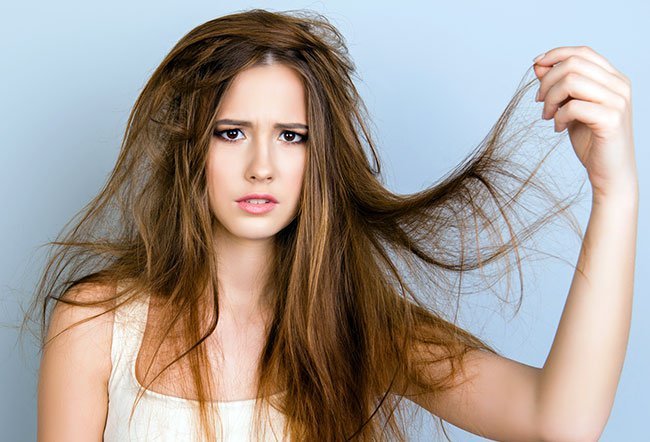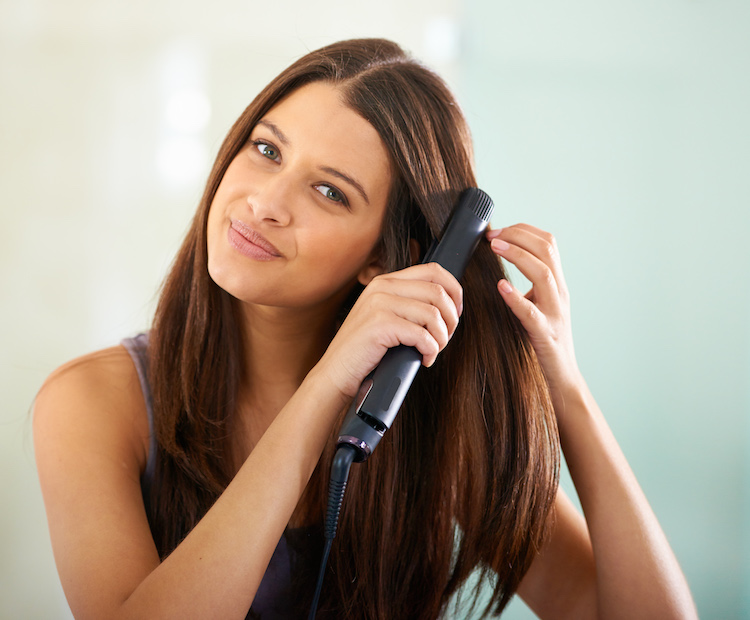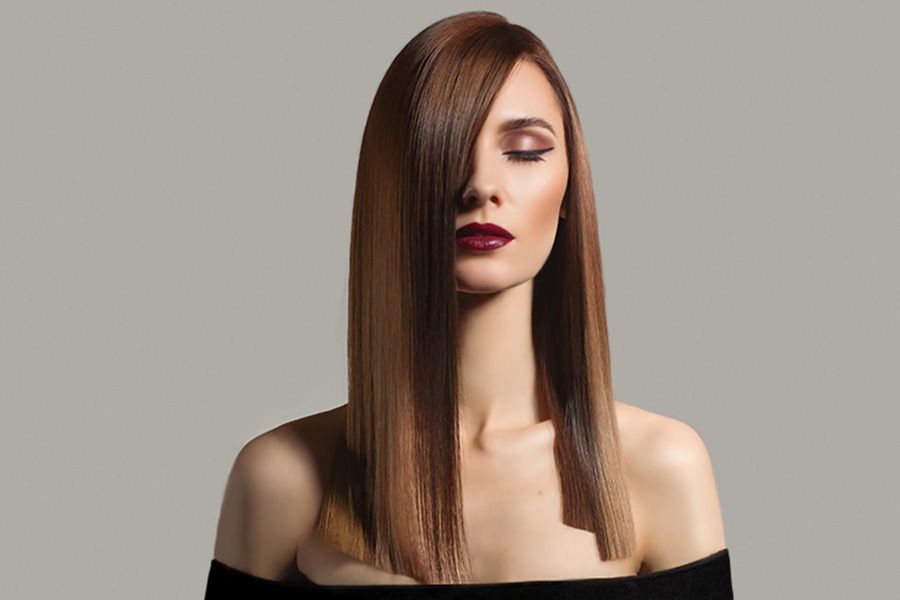Straight hair seems easy…just long, right? Bad. There are many different types of straight hair, from fine to thick, coarse to thick, with pros and cons for each straightening method – and yes, we’re even talking about straightening your hair using processing tools and products. So if you have straight hair or just want to straighten it regularly, read on for all the tips and tricks you need to have beautiful and healthy hair.
Tips for Naturally Straight Hair

Up the ante: Sometimes straight hair needs a little polishing to really shine. Try an unusual bob or asymmetrical hairstyle for a more textured and interesting look. Or introduce white balayage for more effect. Balayage is a technique in which the color is painted on the hair in a warm natural and blended way. You can highlight your hair with the Light Work Balayage Highlighting Kit.
Release the Grease: Hair shine is not good. Treat oily hair with a little shampoo between washes to keep it healthy. Spray dry shampoo on your roots before you go to bed – this gives the shampoo a chance to absorb excess oil while you sleep.
Give it a boost: While hair is wet, massage a pint of Loud + Proud™ Volumizing Foam into roots. Blow dry the top or use a large brush and style the other side to add volume to the top. When dry, spray the hair and apply to any area that needs a little support. Need tips on how to be effective at home?
Pros of Natural Straight Hair

It is difficult Stuff: Due to its excellent structure, the oils from the scalp (sebum) penetrate into the hair quickly, thus providing the hair with softness and all the necessary nutrients. Because of this, straight hair is stronger when it is blown hard, braided or styled.
Mirror Like Shine: Those with naturally straight hair can benefit from a shine serum because the smooth surface of the hair reflects more light and can be soft and shiny.
Easy to grow out: One of the best things about having straight hair is that it is easy to grow it long and strong. The moisture you get from sebum means it’s less prone to split ends, giving it grip and elasticity that bounces back.
Cons of Natural Straight Hair

Greasy: Soft hair is smooth, so more oil is found on the surface of the hair. The simple, refreshing idea of “just wash your hair twice a week” doesn’t cover the situation for people with straight hair who look (and feel) better with regular hair washes.
Hint of Dull/Boring: Although classic and timeless, straight hair has no texture that gives it a bit of flair. Of course we like long hair, we don’t think about approach. But straight hair is more difficult to treat, resulting in long, unruly hair.
Low Volume: People with straight hair sometimes struggle with lack of body in their hair. It is often a challenge to maintain thickness using only hair. Straight hair is usually longer, which means it may require volume support.
Straightening the Hair With Heat

If you have wavy or curly hair but like to straighten it occasionally, you probably already know that styling tools like flat irons are the thing common. Caution for both experienced and novice flat ironers: If your hair is dry, unmanageable or damaged, a flat iron can make it worse. This is because the products used in hot products remove moisture from your hair, causing dryness and breakage. Do your hair again before going to the spa.
If your hair can handle the heat, we recommend heating it no more than once a week. Make sure your hair is freshly shampooed, freshened up and thoroughly rinsed before you use a flat iron or you will be cooking with oil and dirt, which will make things worse. Monitor your hair health as you go. And if you have gray hair, consider protecting the color and health of your hair with our Shampoo and Conditioner.
Tips for Straightening the Hair Without Heat
Here are some tips for straightening your hair without heat styling:

Use big rollers: We know it sounds dull, but big rollers can really lengthen your waves. With this method, your hair will not be good, but it will be enough. YouTube tutorials are also your friend here.
Sleep with wet hair: Tie a loose ponytail on top of your head and create a long look by tying your hair around the ponytail and securing it with a satin wrap. Satin is the key! It is also good to sleep on a satin pillow because it reduces tension.
Wrap your hair: it works, but it’s an art! Watch YouTube tutorials (there are a lot of them) tailored to your hair. You will need a long pin and a satin scarf, bonnet or cloth.
Blow dry with cool air: Allow hair to dry about 3/4 of the way, then use the “cool” setting on the dryer. Move the dryer from root to tip, keeping it about six (6) inches from your hair. You can help the process by using a moisturizing serum or spray balm.

Try products: There are shampoos, conditioners, conditioning serums and other products designed to make hair soft and manageable. Testing these products is a good thing for light types. You can also try DIY hair masks. Protein hair masks tend to make curly hair smoother.
Remember that brushing your hair every day will “teach” your hair to fall in a certain way, but it can also cause dryness and damage. Be kind to your curls and waves – they’re beautiful too!
The Science of Straight Hair
For those who love the science of beauty, dive in. Hair, also known as “type 1”, gets its structure from the shape of the cortex (this is the middle and uppermost part of the hair). Hair is round, so they fall on all sides of the head. Soft hair is also determined by its protein structure and disulfide bonds that form between proteins.
At the end of the follicle (onion) there is a small hook, which prevents it from becoming a horn. Differences don’t usually show up in straight hair, but they do happen. In many cases, hormones and certain drugs change the structure of the hair and make it grow in a different way than before. Below are the three (3) main types of straight hair:
Straight hair: Type 1A (fine)

Such hair is soft and shiny, but thin and straight; true master of curling hair. Easy to handle and style, and usually requires little lifting and rooting. The recommended hairstyle for fine hair is the side parted hair – you can blow it straight for a sexy look. Be sure to choose the type of layer as this will give the illusion of depth and volume. Good hair has a soft texture, but it needs more attention to keep it alive and feeling good.
Straight hair: Type 1B (medium)

With a little effort on the body, medium length hair is flexible and manageable. A cute ponytail is the perfect one for this look because it’s big enough to give your hair shape, but not so big that it breaks the rubber band in the process. Also, 1Bs can enjoy a curl once in a while, as the center structure makes curling easier and longer.
Straight hair: Type 1C (coarse)

1C straight hair is more coarse and difficult to go down in waves or curls, prefer to use one or two visible “S” waves to calculate. The road is long and flat, otherwise it would be more difficult to pass. This is the longest straight hair style, but it is also difficult to manage because of its thickness. However, take the opportunity to lose it and wear it long, parted in the middle, point a flag or experience the magic of a real halo braid. His work is limitless.
Whether you’re rocking straight hair or using a flat iron to achieve it, we hope you enjoy some of these tips.

